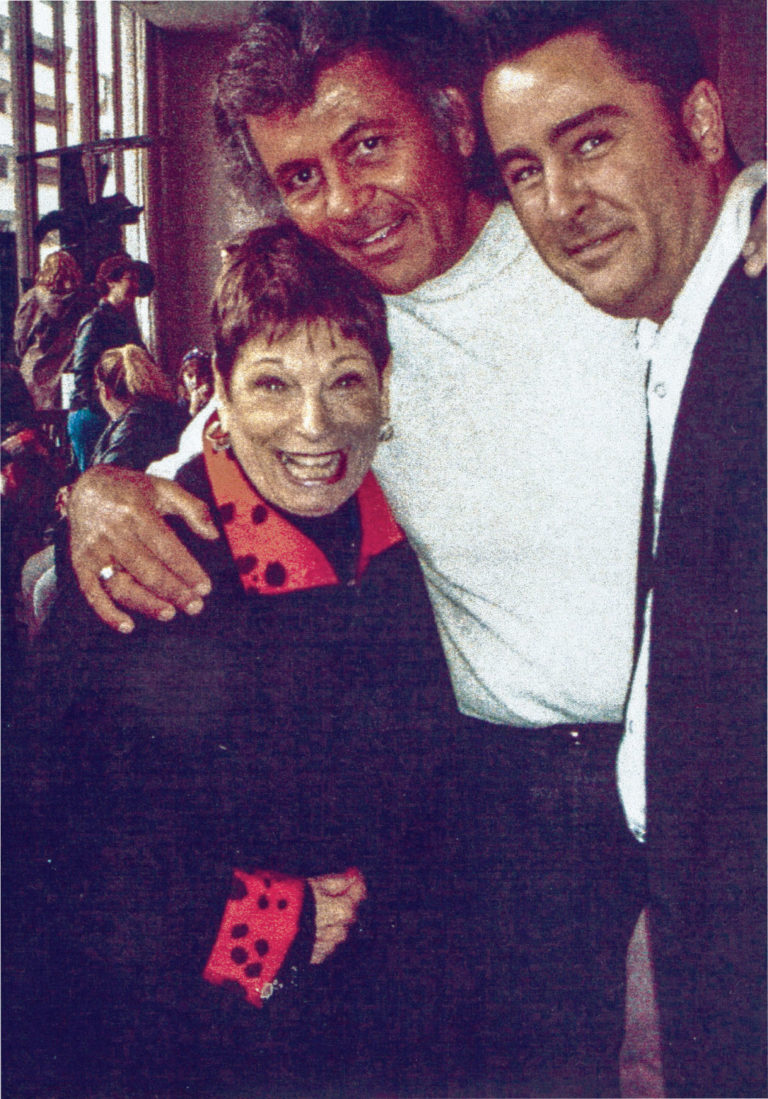
For six giddy, mostly lost-to-time weeks in the spring of 2004, all of Portland was in love with love.
All over the city—on the steps of the county building, under the blooming cherry trees in Waterfront Park, and at dimly lit, hastily repurposed nightclubs—deliriously happy gay couples were getting hitched, more than 3,000 of them, after Multnomah County began issuing marriage licenses for all in early March of that year. (I would know—I was there, reporting on the bacchanalia for the Associated Press.) There was an urgency to it, too. Everyone seemed to know that this much joy could only be ephemeral.
Sure enough, by mid-April, a local judge put a stop to it, saying the four Multnomah County commissioners who’d made it all possible had overstepped their authority. (All four are out of politics now—former county chair Diane Linn would go on to lose her seat to one Edward Tevis Wheeler.)
And what began so joyfully turned ugly that fall, when Oregon voters passed a constitutional amendment limiting marriage to “one man and one woman.” It would take 10 more years for that to be overturned.
Meanwhile, the episode slipped into history, mostly forgotten by except by those who were there. The county took back couples’ licenses, refunded the fees they’d paid, but did ask them to send in mementoes of their wedding days, which live now in the archives of the Oregon Historical Society—four or five boxes full of heartfelt diary entries, cocktail napkins, photos of oh-so-mid-2000s era baggy blazers, often matching, punctuated by the occasional Jessica McClintock dress, for the daring.
“I remember saying to Bear, ‘Goddamnit, Bear, let’s be part of the revolution,’” recalls Mary Walston, now retired from the city of Eugene. Walston had been with her partner, teacher Kathleen Bear, since 1979. For Bear, the chance to get married meant stepping into the light for the first time in a long career of worrying that parents would pull their kids out of school if they knew about her sexuality.
“When we heard about it the night before, we rushed down to the mall, because I wasn’t going to get married without a ring,” Bear remembers. “I get out of the car and realize I have two different shoes on because I ran out of the house. That was the first time I told anyone I was gay in public.”
After getting their license, they drove home to Eugene, and three weeks later threw a party to celebrate at a local athletic club. “We have Scottish terriers, so everything was decorated with terriers, and we had karaoke and a DJ,” Walston says. A few weeks after that, they found out their wedding license was invalid.
“I was mad—I thought about having to go back in the closet,” Bear says. “I thought about having to be very secret again, very careful out in public. I felt less validated, less worthy, still a second-class citizen.” In 2014, when federal judge Michael McShane ruled that Oregon’s ban on gay marriage violated the equal protection clause, the two got married again, in their backyard, surrounded by family and friends, on a sticky-hot summer day—but they still consider their real anniversary to the first one.
Trina Altman and Laurel Ladwig came from their home in Albuquerque to be married in Oregon on the spur of the moment in 2004. They recently found the letter they received from Multnomah County saying that their marriage was “null from inception”—a tiny punch to the gut, even 17 years and another wedding ceremony later.
They kept their 2004-era wedding rings on out of commitment and defiance. In 2013, they got a chance to marry again, this time in New York, which they chose because they figured New Yorkers would have their back and not yank away their license. For their second ceremony, Ladwig re-proposed, hiding a joke Star Wars–themed ring in the chard she was growing in their backyard, embossed with the immortal words of Princess Leia and Han Solo: “I love you. / I know.”
Still, they don’t regret that long-ago flight to Oregon: “It was a chance to do something that we couldn’t do before,” Altman says. “Until the Supreme Court case, I don’t know that it ever felt that it wasn’t a little bit tenuous. I was disappointed, but I had also braced myself for that possibility.”
Native Portlanders Jeff Fisher and Ed Cunningham lived through proposed Measure 9 in the early 1990s, which aimed to ban any civil rights protections for LGBTQ Oregonians. (It failed, but more than 600,000 Oregonians voted for it.) Fisher, a graphic designer, was a founder and spokesperson for the city’s first gay and lesbian business association; for his trouble, he got death threats.
By 2004, the pair had been together for 14 years and were registered as domestic partners, but couldn’t pass up the chance to be married. They got up early to line up that first day, cold and windy, more people they knew arriving to take their place in line, two by two.
Their neighbors’ daughters stood in as their “ring princesses,” wearing tiaras from Target; the owner of DiPrima Dolci, an Italian bakery in North Portland, made her first-ever wedding cake for them. A conservative friend who was a deacon in her church received special dispensation to attend; some family members made flimsy excuses; others they’d never expected to have their back showed up to cheer them on.
A second wedding followed years later, a sunset ceremony at a California vineyard. But it was the first one, Cunningham said, that meant the most, even when the state changed its mind.
“I had stuffed things down for so long—I was surprised at how it changed our relationship for the good,” he says. “Even though the rug was pulled out from underneath us. It still made us closer.”